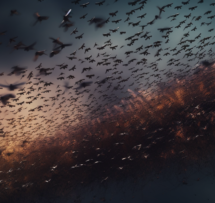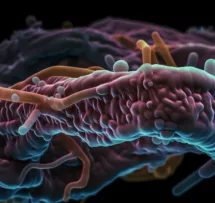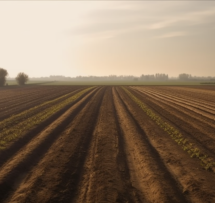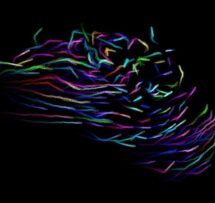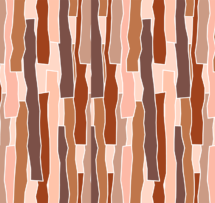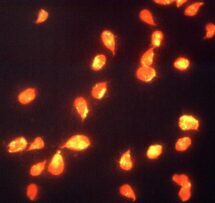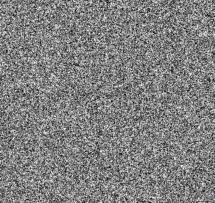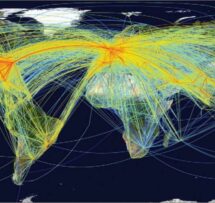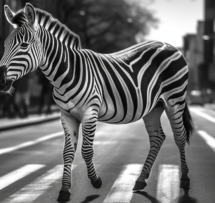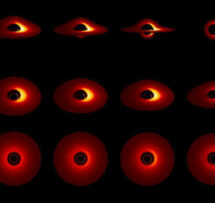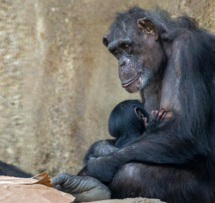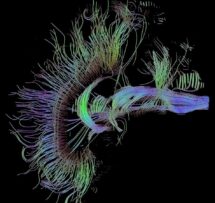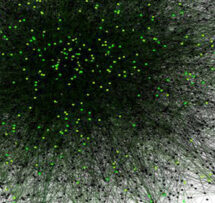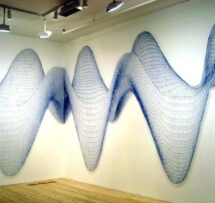The collective motion of flocks of birds and schools of fish
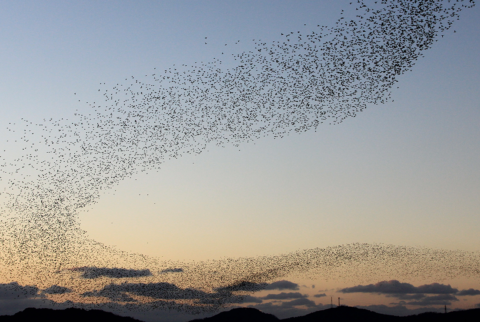
Why is the shape of a fish school on average oblong? Why is the shape of huge flocks of starlings continuously changing? Are there leaders in the huge flocks of starlings? Do starlings in the flock keep close to a familiar neighbour? Can the study of patterns of collective escape by birds from a predator have any use for human society?
The mystery of flocks of starlings concerns the coordination of their flock members and how this collective behavior can lead to such miraculous changes in flock shape and density. This fascinating question needs to be solved by combining computational models with empirical data. Empirically detailed measurements have been done on many aspects, such as their flock shapes, the degree of motion of individuals within a flock and on the collective reaction to a predator through a so-called wave of agitation. A wave of agitation is observed as a dark band moving over the flock and away from a raptor.
This evening, Charlotte Hemelrijk will discuss a number of causes for these empirical data and how theories about self-organisation and computer models can help understanding collective phenomena.
Afterwards, cocktails that do not move collectively and live music.
This event is an initiative by the Dutch Institute for Emergent Phenomena (DIEP) with the support of NWA Route 2. The event is held in English.
Science & Cocktails Amsterdam is presented in cooperation with Paradiso and acknowledges the support of New Scientist.

Charlotte Hemelrijk
The collective motion of flocks of birds and schools of fish
Why is the shape of a fish school on average oblong? Why is the shape of huge flocks of starlings continuously changing? Are there leaders in the huge flocks of starlings? Do starlings in the flock keep close to a familiar neighbour? Can the study of patterns of collective escape by birds from a predator have any use for human society?
Talk by
Charlotte Hemelrijk
Professor at the faculty of science and engineering with expertise on self-organisation in social systems. She is member of the editorial board of PLoS OneChair of the Dutch Society of Theoretical Biology (NVTB), member of the board of the Groningen Center for Social Complexity Studies and member of the NWO-committee Complexity call.

Music by
Zinoun Abou Saleh & Francesca Fralalai
Fralalai (Francesca Lai) is an Italian harp player and singer-songwriter based in Amsterdam. Her solo repertoire includes her original songs and a few traditional covers, mainly performed with Celtic harp and voice (and with other instruments such as lyre, frame drum and kalimba). Her music is infuse with dreamy Celtic atmospheres, as well as with the emotional intensity of Mediterranean and Middle eastern tones. She sings in a variety of languages, including what she called "channeled languages": abstract words that she uses to evoke, reather than to describe. Fralalai defines herself as a Neo-ancient trobairitz (female troubadour) who explores different styles and languages in a cross-cultural journey which connects our modern times with the ancient worlds. Her performances lead to enchanted inner journeys, which allow you to reconnect with your emotions and with Nature, and to celebrate your soul.


